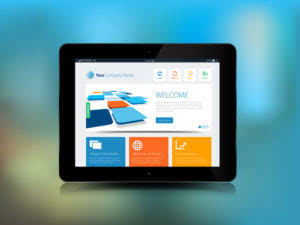
Managing debits and credits is essential for keeping financial records accurate and ensuring smooth operation. While they may seem straightforward, using them without mistakes is critical to maintaining financial health. Balance sheet and income statement accounts are a mix of debits and credits. At their core, debits and credits are the 2 sides of every financial transaction recorded in the accounting system.

Common causes of debit/credit errors
Similarly, interest that has accumulated on a loan but has not yet been paid is also recorded as an accrued liability. On a balance sheet, liabilities show a company’s financial obligations to its lenders and creditors due to past transactions. They occur on the right side of the balance sheet and are divided into current and long-term liabilities.
Elements of Financial Statements
A lower percentage shows better financial stability, making lenders more likely to approve loans with good terms. Long-term obligations, like bonds payable, belong in non-current sections. Update these records regularly to reflect accurate historical costs and avoid mistakes in financial reports. These include wages payable, interest payable, and other unpaid bills. For example, an employee earns their salary in September but gets paid in October. Having more assets than Liabilities is a sign of good financial health.

Difference 4: Impact on profits and cash flow
- The balance sheet, on the other hand, is like a financial snapshot of a company at a specific point in time.
- When the bill arrives, the team will record it as an expense and an increase in accounts payable to represent the future obligation.
- By accurately tracking expenses, business owners have a clearer picture of their profitability and efficiency.
- With BILL Spend & Expense, teams can enjoy automated expense tracking and reporting.
- Accrued expenses, on the other hand, are obligations to pay in the near future.
- Proper financial planning and execution help businesses maintain stability, improve cash flow, and optimize operations.
Non-current liabilities are debts that don’t need to be paid off right away. These are usually due more than a year from now, but they still need to be tracked so clients can plan ahead. Liabilities, expenses, and equity often get mixed up, but it’s important to understand the difference.
- Expenses have their own VIP lounge on the income statement, hobnobbing with revenue, gains, and losses.
- A contingent liability is an obligation that might have to be paid in the future but there are still unresolved matters that make it only a possibility, not a certainty.
- This equation reflects that everything a company owns (assets) is either financed by borrowing (liabilities) or by investments from owners (equity).
- However, the internal revenue service (IRS) has strict rules on the expenses businesses have permission to claim as a deduction.
- For example, if you pay cash for office supplies, debit the “Office Supplies Expense” and credit “Cash.” This practice ensures your income statement reflects all business costs accurately.
- Managing short-term debt and having adequate working capital is vital to a company’s long-term success.
Liabilities are recorded as a debit to an asset or expense account, depending on the nature of the transaction, and a credit to the applicable liability account. When the liability gets eventually settled, the liability account will be debited and the cash account credited from which the payment took place. In accounting, expenses fall under two main categories namely operating expenses and non-operating expenses. Operating expenses are the expenses that are related to the main activities of a company such as the cost of goods sold, administrative fees, office supplies, direct labor, and rent.
- They are listed on the right side and grouped into current and non-current categories.
- It reveals the company’s financial health by showing what it owns (assets), what it owes (liabilities), and what’s left over (owners’ equity).
- A balance sheet reports your firm’s assets, liabilities, and equity as of a specific date.
- Instead, they reflect the company’s financial obligations and its ability to meet those obligations in the future.
- These include the working capital ratio, the quick ratio, earnings per share (EPS), price-earnings (P/E), debt-to-equity, and return on equity (ROE).
- Understanding these financial concepts allows businesses to manage their resources effectively.
Understanding liabilities and expenses, their differences, and their impact on financial statements is fundamental to effective business accounting. Proper classification not only provides clarity but also supports accurate financial reporting and compliance. When learning bookkeeping basics, it’s helpful to look through examples of debit and credit accounting for various transactions. In general, debit accounts include assets and cash, while credit accounts include equity, liabilities, and revenue. Accrued liabilities can include a variety of expenses such as wages, interest, taxes, and utilities. For instance, if employees have performed work are liabilities expenses but have not yet been paid by the period’s end, the company must record the owed wages as an accrued liability.
Bull Terrier vs. Pit Bull: Key Differences in Terrier Breeds

Using the balance sheet data can help you QuickBooks ProAdvisor make better decisions and increase profits. Expenses are the costs required to conduct business operations and produce revenue for the company. A company that can’t afford to pay may not be operating at the optimum level. Accrued expenses are those that have been incurred but not paid yet.
- Company assets come from 2 major sources – borrowings from lenders or creditors, and contributions by the owners.
- For example, paying less for advertising reduces costs/expenses but lowers the company’s visibility and ability to reach out to potential customers.
- The business provides $500 worth of consulting services, and the client promises to pay later.
- They’re a key part of the balance sheet and help complete the financial picture.
- Current liabilities serve as a critical indicator of a company’s short-term solvency and its ability to generate enough cash to meet its obligations within the next twelve months.
- They are only recorded if the event is likely and the amount is estimable.

The breakout cash flow is essential for investors to model gross margin, operating margin, and net margin separately. Tracking office supplies, depreciation, and other recurring business expenses separately keeps operating expenses transparent. Non-operating expenses, such as interest on debt or a one-time restructuring charge, sit below operating income so analysts can isolate core performance. Other examples of liabilities in this category include short-term portions of long-term debt and utilities payable.
